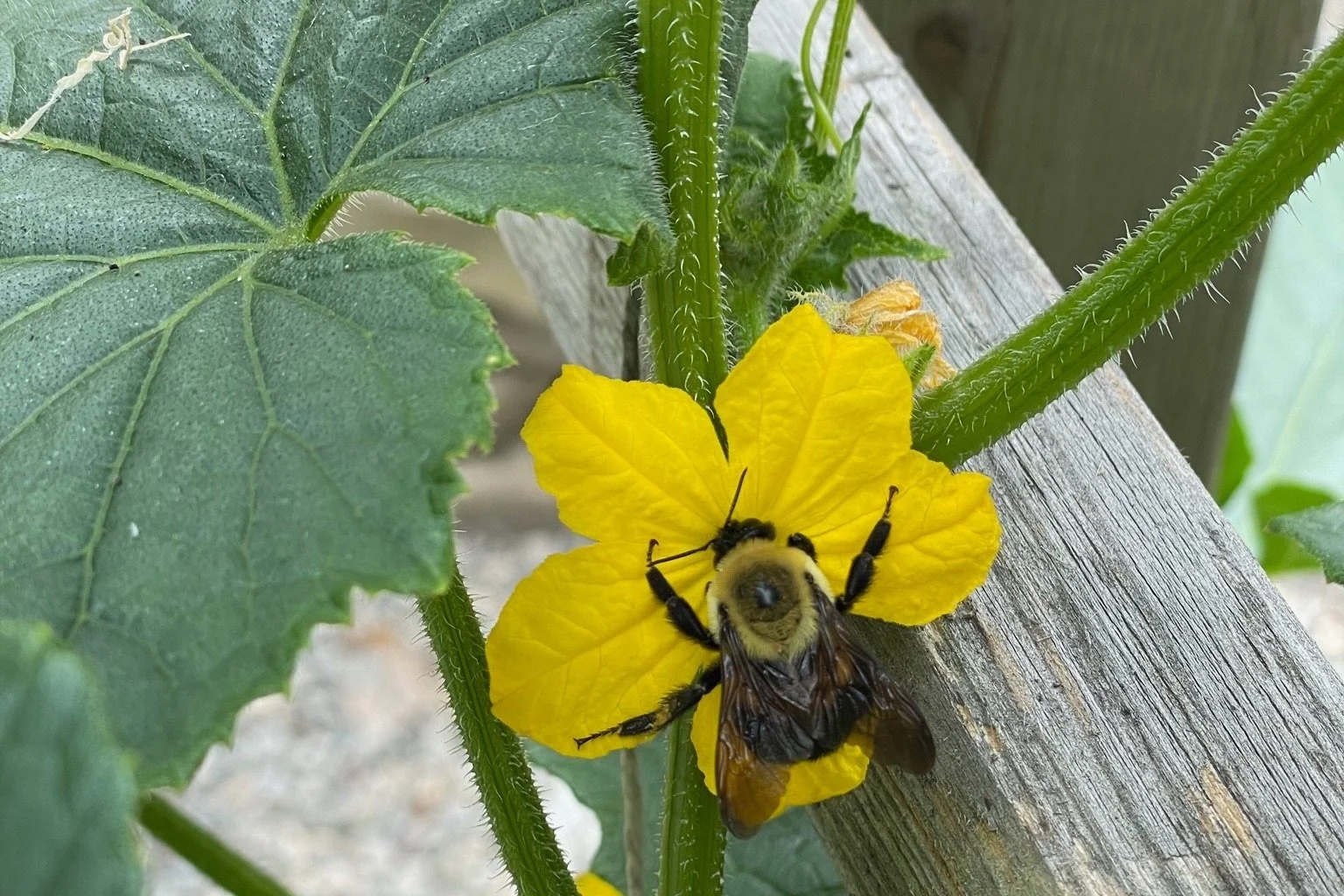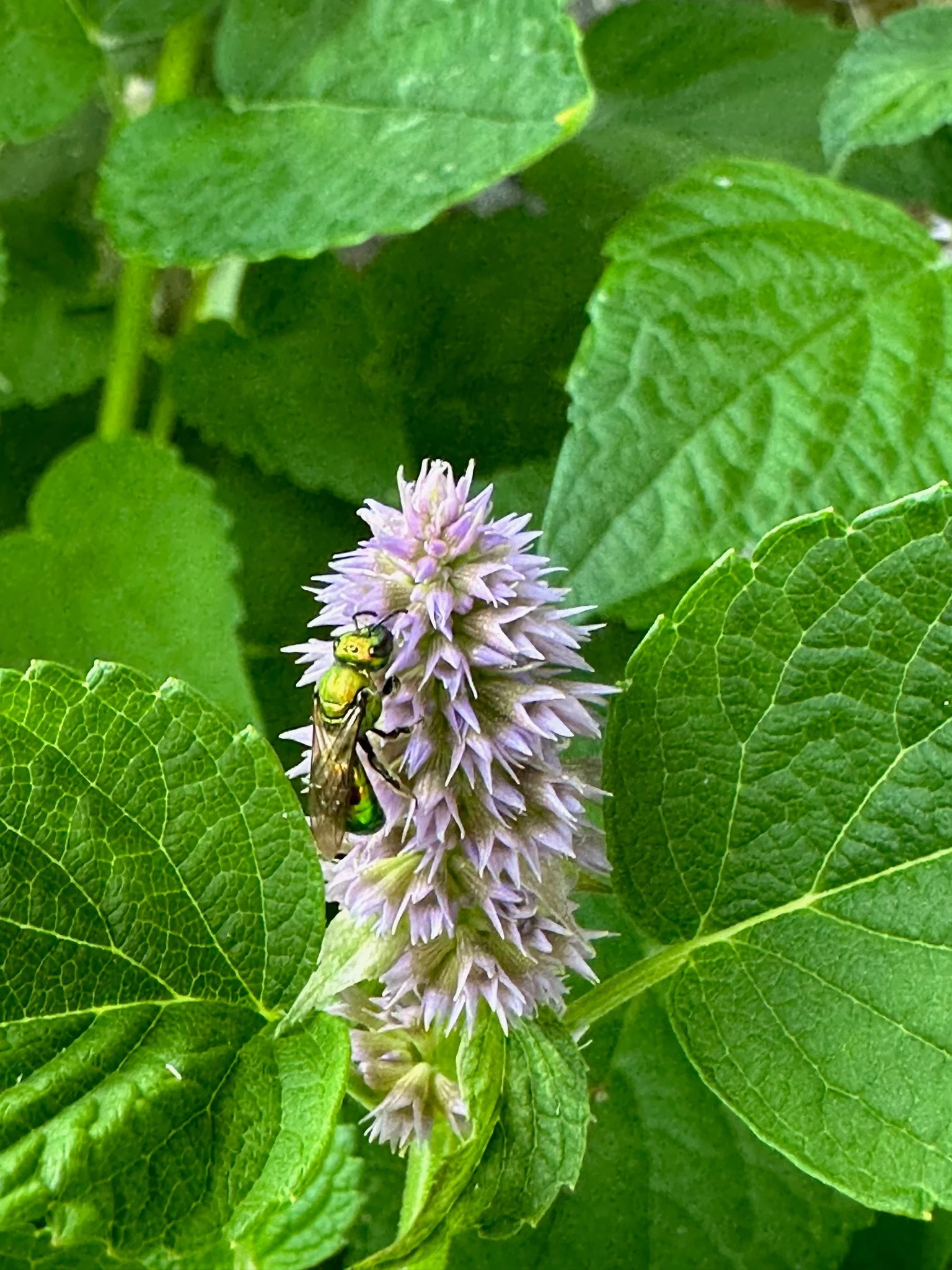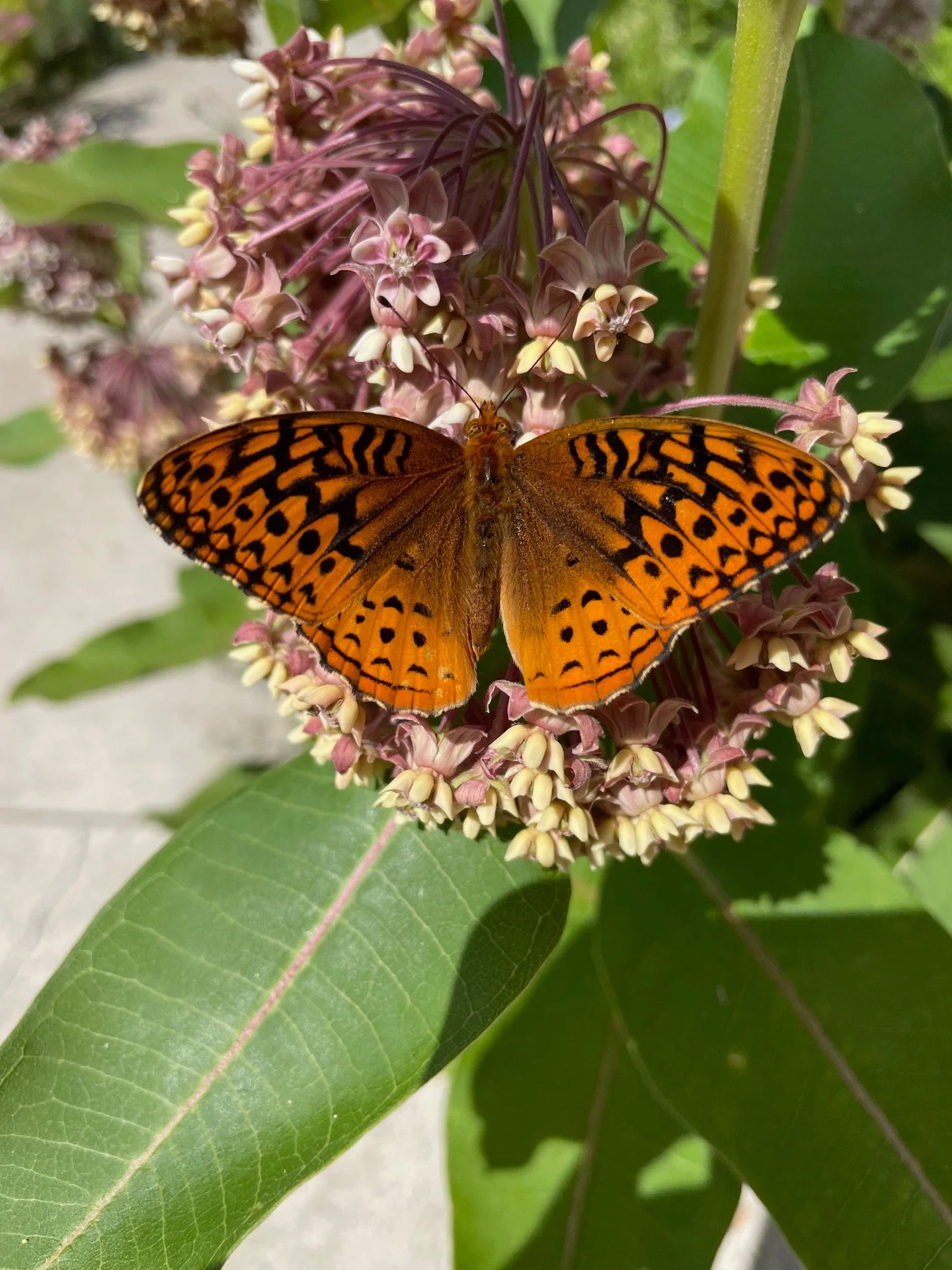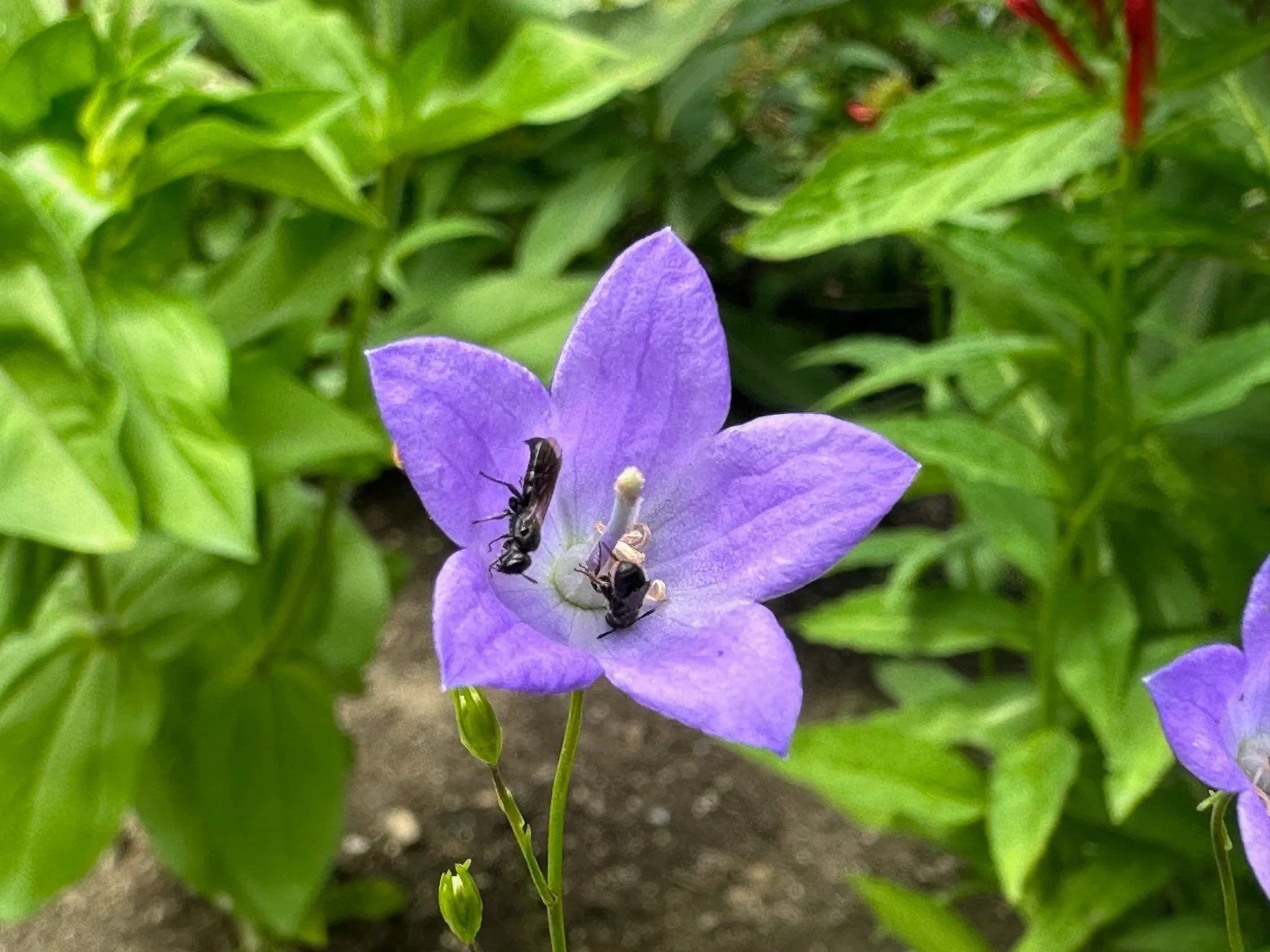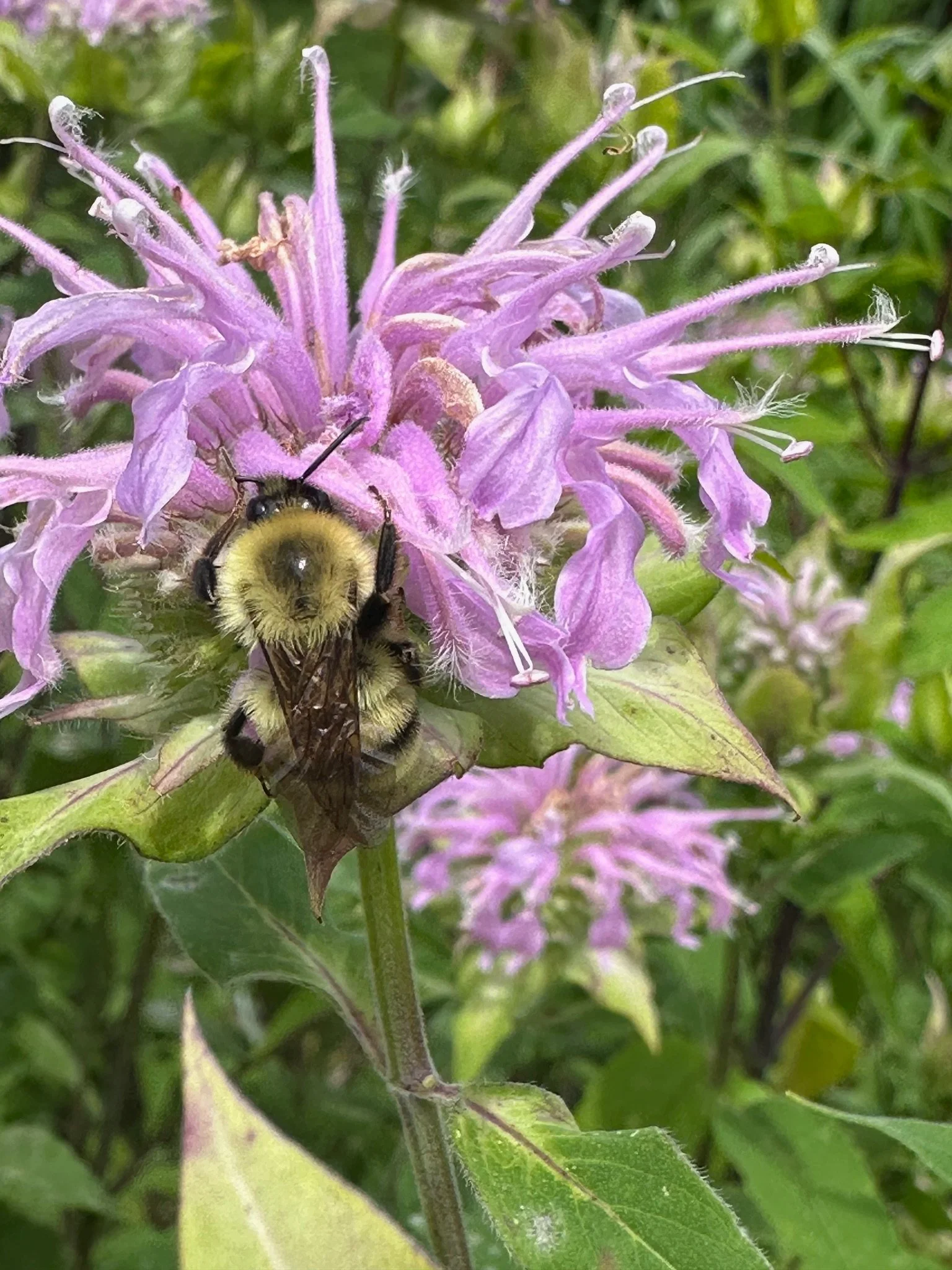How To Attract Pollinators
Brown Belted Bumble Bee on Cucumber Flower
Here are some tips to help you attract bees, butterflies, birds, and other pollinators to your garden:
Plant a Variety of Flowers: Choose flowers with different shapes, sizes, and colours. Remember, big bumblebees won’t fit into tiny flowers!
Provide a Water Source: A shallow dish with water and stones can give pollinators a place to drink and rest. Ensure the stones are not submerged, as bees prefer to crawl to the water’s edge without getting their feet wet.
Avoid Pesticides: Chemicals can harm pollinators. Instead, opt for organic pest control methods, like attracting beneficial insects such as assassin bugs and wasps to take care of pests.
Plant in Clusters: Group the same type of plants together to make it easier for pollinators to find them. Consider the flight radius of different pollinators; for example, small carpenter bees need ample food within their habitat since they don’t fly as far as larger bumblebees.
Choose Plants that Bloom at Different Times: Ensure there’s always something in bloom to attract pollinators throughout the growing season.
Create Habitats: Leave some areas of your garden wild with leaf litter, logs, and brush piles for nesting and shelter. Caterpillars also need places to pupate, so avoid cutting back all your flowers to provide spots for chrysalis formation on dried stems.
Plant Host Plants: Different butterflies require specific host plants for laying their eggs. A butterfly garden needs host plants for larvae to feed on, not just pretty flowers.
Monarch Butterfly Caterpillar on Common Milkweed
Leave the Leaves: Avoid cleaning your garden too early in spring. Many pollinators rely on leaf litter to survive through the last frost. Clearing leaves too soon can harm colonies by killing the queen.
Go Native: Native plants are especially effective at attracting local pollinators. While European honeybees are introduced species, they only contribute a small part to pollination in North America. But not only that, honeybees can pose a threat to native bee species due to competition for resources, habitat overlap especially at large colony sizes. Some native bee species, like the rusty-patched bumblebee, are especially vulnerable to competition and habitat loss, so planting a variety of native flowers helps support them.
Avoid Hybrid Plants: Many hybrid plants have been bred for aesthetic qualities and may lack nectar and pollen. Stick to heirloom or native varieties to ensure they provide food for pollinators.
Provide Nesting Materials: Offer materials like mud, twigs, and leaves for bees to use in building their nests.
Avoid mulching your garden: When we stopped mulching, we had an influx of native ground-nesting bees. If you can’t live without mulch, you can leave small patches of bare soil for ground-nesting bees.
Create a Butterfly Puddling Area: Butterflies need minerals and moisture, which they get from wet soil or sand. Create a shallow puddling area with damp sand to attract them.
Incorporate Night-Blooming Plants: Some pollinators, like moths and certain bats, are active at night. Planting night-blooming flowers such as evening primrose or moonflower can attract these nocturnal pollinators.
Provide Shelter from Wind: Plant hedges, trees, or tall grasses to protect pollinators from strong winds. This creates a more hospitable environment for them to forage and nest.
Include Diversity in Plant Heights: Having a variety of plant heights creates a layered garden structure that can attract different types of pollinators.
Educate and Involve Others: Share information about the importance of pollinators with your community. The more people involved in creating pollinator-friendly spaces, the better for the ecosystem.
Community work to educate the neighbourhood about native species.
Reduce Artificial Lighting: Excessive artificial light can interfere with insects' natural activities, including navigation, mating, and feeding. To reduce the impact on nocturnal insects, consider using soft, motion-activated outdoor lighting, which helps minimize disturbances while still providing necessary illumination.
Monitor and Document: Keep a journal or take photos of the pollinators you observe in your garden. This can help you learn which plants are most effective and encourage continuous improvement.

